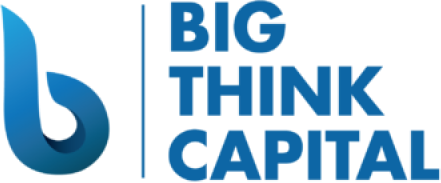Your business has big plans. Maybe you need to invest in new machinery, purchase your commercial space, or acquire a competitor to expand your market share. These major growth moves all have one thing in common: they require significant capital. The SBA 7(a) loan is designed to fund exactly these kinds of ambitions, offering up to $5 million in flexible financing. It’s the fuel that can turn your long-term vision into a present-day reality. But before you can get funded, you need a solid application. This guide will show you how to build one, starting with a complete SBA 7a loan requirements checklist that ensures you have all your bases covered before you even speak to a lender.
Key Takeaways
- The SBA guarantee is your key to approval: The SBA acts as a co-signer on your loan, reducing risk for lenders and making them more likely to say yes. This partnership opens the door to flexible funding for nearly any business purpose, including working capital, equipment, or real estate.
- Organize your financials to prove your case: A strong application is built on solid proof. Before you apply, gather your business plan, financial statements, and tax returns to clearly demonstrate your company’s health and ability to repay the loan, which significantly speeds up the approval timeline.
- Treat your lender like a strategic partner: You’ll work directly with an SBA-approved lender, not the government. Building a strong relationship through clear communication and quick responses is crucial, as they are your guide and advocate throughout the entire loan process.
What Is an SBA 7(a) Loan?
If you’ve started looking into business funding, you’ve likely come across the SBA 7(a) loan. It’s the U.S. Small Business Administration’s most common and flexible loan program, designed to help entrepreneurs get the capital they need to start, acquire, or expand their businesses. Think of it as a versatile tool you can use for almost any legitimate business purpose, from stocking up on inventory and hiring new staff to purchasing commercial real estate.
One of the biggest misconceptions is that the SBA lends you the money directly. That’s not quite how it works. Instead, the SBA partners with approved lenders (like banks and credit unions) and guarantees a significant portion of the loan. This government backing reduces the risk for the lender, making them more willing to offer favorable terms to small business owners who might not qualify for a conventional loan. This partnership is what makes the 7(a) loan program such a powerful and accessible option for so many businesses.
How SBA 7(a) Loans Work
The magic of the SBA 7(a) loan lies in its guarantee. When you apply, you’re working with a traditional lender, but the SBA stands behind your loan, promising to repay a large percentage to the lender if you default. This safety net encourages lenders to approve loans for growing businesses they might otherwise consider too risky. For you, the business owner, this means better access to capital. The program is incredibly flexible, allowing you to use the funds for working capital, equipment purchases, real estate acquisition, and more, making it a go-to solution for a wide variety of business needs.
How Much Can You Borrow?
The SBA 7(a) program offers a broad funding range to accommodate businesses of all sizes and stages. You can typically borrow anywhere from $50,000 up to a maximum of $5 million. This flexibility is a huge advantage, as it allows you to secure the precise amount of capital your business requires. Whether you need a smaller sum to manage cash flow or a multi-million dollar loan for a major expansion or acquisition, the 7(a) program can be tailored to fit your specific financial goals. This makes it an excellent option for both new startups and established companies planning their next big move.
What Is the SBA Guarantee?
The SBA guarantee is the core feature that makes the 7(a) loan program so effective. It’s essentially a promise from the SBA to your lender that it will cover a portion of the loan balance if you’re unable to repay it. This guarantee significantly lowers the lender’s financial risk, which is the main reason they are more likely to approve an SBA-backed loan compared to a conventional one. For you, this means you have a much stronger chance of securing the funding you need to grow, even if you don’t have a long credit history or substantial collateral. It’s the key that opens the door to affordable financing for countless small businesses.
Do You Qualify? Key Eligibility Requirements
SBA 7(a) loans are a fantastic tool for small business owners, but they come with a specific set of rules. Before you get too far into the application process, it’s smart to see if you meet the basic criteria. Think of it as a preliminary checklist to make sure you’re on the right track. The good news is that these requirements are designed to support legitimate, operating small businesses, so if that sounds like you, you’re already halfway there.
The Small Business Administration sets these guidelines to ensure the loans go to businesses that can handle them and use the funds to grow and create jobs. Lenders, in turn, use these rules as a starting point for their own review. The main things they’ll look at are your business’s size and type, your financial history, and your ability to repay the loan. It might sound like a lot, but breaking it down makes it much more manageable. We’ll walk through each key requirement so you can see exactly where you stand and what you might need to work on before you start your application.
Business Size and Structure
First things first, your business has to be officially “small” by the SBA’s standards. For most industries, this means having fewer than 500 employees and bringing in less than $7.5 million in average annual receipts. The SBA has a detailed size standards tool if you want to check the specifics for your industry, as the definition can vary. Your business must also be a for-profit entity, so non-profits are generally not eligible. Finally, you have to be doing business (or have a solid plan to do business) in the United States or its territories.
Credit Score Minimums
Your credit history is a major factor in any loan application, and SBA loans are no exception. While the SBA doesn’t set a strict minimum, most lenders will want to see a personal credit score of at least 640, though some may look for 680 or higher. They’re looking for a solid track record of managing debt responsibly because it shows them that you’re a reliable borrower. If your score is a little lower, don’t panic. It’s still worth having a conversation, as lenders often look at your entire financial picture, not just one number.
Location and Citizenship Rules
To qualify for an SBA 7(a) loan, your business must be physically located and operate within the United States or its territories. This is a hard-and-fast rule. Additionally, the business owners must have eligible immigration status. This typically means you must be a U.S. citizen or a legal permanent resident (LPR), also known as a green card holder. The SBA wants to ensure that the individuals receiving the government-backed funds have a long-term, legal stake in the country’s economy and are authorized to work here.
Eligible Industries
The great news is that most for-profit industries are eligible for SBA 7(a) loans. This includes businesses that sometimes struggle to get conventional financing, like restaurants, retail shops, and auto repair centers. However, the SBA does have a list of ineligible industries. These typically include businesses involved in lending, speculation, real estate investment, gambling, or multi-level marketing. The goal is to fund active businesses that directly contribute to the economy, rather than passive investment vehicles or those involved in activities deemed inappropriate for government-backed funding.
Time in Business
While some SBA programs are geared toward startups, the 7(a) loan is generally for established businesses. Lenders want to see that your business is operational and has a proven track record of generating revenue. Most lenders prefer to see at least two years of business history. This demonstrates that your business model is viable and that you have experience managing your operations and finances. Having a history of profitability significantly strengthens your application because it shows you have the cash flow to make loan payments and sustain your operations.
Financial Standing
Ultimately, the lender needs to be confident that you can pay back the loan. You’ll need to demonstrate this with strong financial documentation. This includes providing a clear picture of your business’s current debts, assets, and cash flow. Be prepared to submit profit and loss statements, balance sheets, and business tax returns. The lender will analyze these documents to assess your company’s financial health and its ability to take on new debt without becoming over-leveraged. A well-organized financial history is one of the most powerful tools you have in your application.
Your SBA 7(a) Documentation Checklist
Applying for a loan can feel like a paper-chase, but getting your documents in order ahead of time makes the whole process smoother and faster. Think of this as your game plan for a successful SBA 7(a) loan application. Lenders need to see a complete picture of your business—its history, its financial health, and its future potential. By gathering these items now, you’re showing them you’re organized, serious, and ready for the next step.
This checklist breaks down exactly what you’ll need to provide. We’ve organized it into simple categories so you can tackle it one step at a time. Having everything ready will not only speed up your approval but also give you a clearer understanding of your own business’s strengths. Let’s walk through what you’ll need to pull together.
Business Formation Documents
First up, you’ll need to show how your business is legally structured. These are the foundational documents that prove your company is a legitimate entity. Depending on your business type, this could be your Articles of Incorporation, LLC operating agreement, or partnership agreement. Essentially, it’s the official paperwork you filed when you first started your business. Lenders use these documents to verify your ownership structure and confirm that your business is in good standing. Make sure you have clean, updated copies ready to go.
Financial Records and Tax Returns
This is where you demonstrate your business’s financial track record. Lenders will want to see your last three years of business tax returns to understand your revenue and profitability over time. You’ll also need to provide recent financial statements, typically from within the last 60 days. These include your profit and loss (P&L) statement, which shows your income and expenses, and a balance sheet, which gives a snapshot of your assets and liabilities. Finally, prepare a complete list of your current business debts.
Personal Financial Statements
Because the SBA guarantees the loan, lenders need to assess the financial health of the business owners, too. You and any other owner with a 20% or greater stake in the company will need to complete the SBA Form 413, also known as the Personal Financial Statement. This form details your personal assets, liabilities, and net worth. It gives the lender confidence that the people behind the business are financially responsible. Be prepared to provide supporting documents, like personal tax returns, to verify the information.
Licenses and Legal Paperwork
Beyond your formation documents, you’ll need to provide copies of any licenses, permits, or certifications required to operate your business legally. This could include a state business license, professional certifications, or health department permits, depending on your industry. If you have any important contracts with key clients or leases for your business premises, it’s a good idea to have those on hand as well. This paperwork shows the lender that you’re compliant and have a solid operational foundation.
Required SBA Forms
The application process involves a few specific SBA forms, but don’t let that intimidate you. The primary one is the SBA Form 1919, or the Borrower Information Form. This document collects basic information about you, your business, and any other owners. It helps the SBA determine your eligibility for the loan program. Your lender will guide you through filling out this and any other required forms, ensuring everything is completed accurately. It’s a standard part of the process, and we’re here to help you with it.
Other Supporting Documents
Finally, you’ll need to show the lender your vision for the future. This is done through a solid business plan and detailed financial projections. Your business plan should outline your company’s goals and the strategies you’ll use to achieve them, including how you plan to use the loan funds. Your financial projections should forecast your revenue and expenses for at least the next two years. This demonstrates that you have a clear, viable plan for growth and can comfortably manage the loan payments.
How You Can Use SBA 7(a) Funds
One of the best things about the SBA 7(a) loan is its flexibility. It’s the SBA’s most popular loan program for a reason—it’s designed to support small businesses in a wide variety of ways. Whether you’re looking to manage daily expenses, invest in major assets, or expand your footprint, this loan can provide the capital to make it happen. The U.S. Small Business Administration outlines several approved 7(a) loan uses, giving you plenty of options to put the funds to work for your business’s specific needs. Let’s walk through some of the most common ways you can use the money.
Cover Working Capital and Operations
Every business needs cash on hand to keep the lights on and the doors open. You can use an SBA 7(a) loan to cover your working capital needs and daily operational expenses. This includes everything from making payroll and paying rent to purchasing inventory and funding your marketing campaigns. Having this financial cushion allows you to manage your cash flow more effectively, ensuring you can handle short-term costs without stress. It’s a practical way to maintain stability and give yourself the breathing room you need to focus on long-term growth.
Purchase Equipment and Real Estate
Ready to make a big investment in your business’s future? An SBA 7(a) loan can help you purchase major assets that are essential for your operations. This could mean buying new machinery to increase production, upgrading your company’s tech, or purchasing vehicles for your fleet. You can also use the funds to buy, build, or renovate commercial real estate. So, whether you’re finally ready to own your building instead of leasing or you need to expand your current space, this loan can provide the financing to make it a reality.
Acquire Another Business
Growing your business through acquisition can be a powerful strategic move, and an SBA 7(a) loan can help you do it. You can use the funds to purchase another existing business, either in whole or in part. This is a fantastic option if you’re looking to expand into a new market, acquire a competitor’s customer base, or add a new service or product line to your offerings. Instead of building from the ground up, an acquisition can give you an immediate foothold and accelerate your growth timeline.
Refinance Existing Debt
If you’re juggling multiple business debts with high-interest rates, it can feel like you’re constantly playing catch-up. An SBA 7(a) loan offers a smart solution by allowing you to refinance your existing debt. By consolidating your various loans into a single loan with a more favorable interest rate and a longer repayment term, you can lower your monthly payments and free up cash flow. This not only simplifies your finances but also strengthens your company’s financial health, putting you in a much better position for the future.
Fund Construction and Renovations
Improving your physical space can have a huge impact on your business’s efficiency and customer appeal. You can use SBA 7(a) loan funds for new construction projects or to renovate your current location. This could mean building out a new office, remodeling your retail storefront to create a better customer experience, or adding a new wing to your manufacturing facility. These kinds of improvements are long-term investments that can enhance your brand, streamline your operations, and ultimately drive more revenue for your business.
Key Loan Terms to Know
Getting approved for an SBA 7(a) loan is a huge step, but before you sign any agreements, it’s essential to understand the fine print. The terms of your loan will shape your business’s finances for years to come, so let’s walk through the key components you’ll see in your loan offer. Knowing what these terms mean will help you make a confident and informed decision for your company’s future.
Interest Rates and Fees
The interest rate is the percentage of the loan amount that you’ll pay to the lender as a cost of borrowing. For 7(a) loans, these rates are negotiated between you and the lender but are subject to SBA maximums. They are typically tied to the prime rate plus an additional margin. Depending on your loan amount and terms, you might see rates ranging from 10.50% to 15.50%. Beyond the interest rate, be sure to ask your lender about any additional fees, such as guarantee fees or closing costs, so you have a complete picture of the total cost of your loan.
Repayment Schedules
Your repayment schedule outlines how long you have to pay back the loan and the frequency of your payments. The repayment term for an SBA 7(a) loan is quite flexible, usually ranging from 10 to 25 years. The length of your term often depends on how you plan to use the funds. For example, a loan for working capital might have a shorter term, while a loan for purchasing real estate could extend up to 25 years. A longer term can give you a lower monthly payment, which is great for cash flow, but it also means you’ll likely pay more in interest over the life of the loan.
Collateral Requirements
Collateral is an asset—like equipment, inventory, or real estate—that you pledge to a lender to secure a loan. It acts as a safety net for the lender; if you’re unable to repay the loan, the lender can take possession of the collateral to recoup its losses. While the SBA’s guarantee reduces some of the lender’s risk, they will still often require collateral for larger loan amounts. Be prepared to discuss what business or personal assets you can offer to secure your financing. This is a standard part of the process and shows the lender you have skin in the game.
Personal Guarantees
A personal guarantee is a common requirement for SBA loans. It’s a written promise from a business owner to be personally responsible for the loan if the business defaults. This means if your business fails to make its payments, the lender can seek repayment from your personal assets, such as your home or savings. Lenders require this to ensure you are fully committed to the success of your business and the repayment of the loan. Any individual who owns 20% or more of the business is typically required to provide a personal guarantee.
Insurance Policies
To protect their investment, lenders may require you to have certain types of business insurance. This isn’t just a box to check; it’s a crucial protection for both you and the lender. For example, if you use the loan to purchase a building, you’ll need property insurance. If you buy key equipment, you may need a specific policy to cover it. General liability insurance is also a common requirement, as it protects the business from a variety of claims. Your lender will specify the types and amounts of coverage you need to secure and maintain throughout the life of the loan.
How to Prepare a Strong Application
Putting together a loan application can feel like a huge task, but breaking it down into manageable steps makes it much easier. A well-prepared application not only speeds up the process but also shows lenders that you’re a responsible and organized business owner. Think of it as telling your business’s story with clear, compelling evidence to back it up. By focusing on finding the right partner, getting your documents in order, and understanding the timeline, you can confidently present your business in the best possible light.
Find the Right SBA-Approved Lender
One of the most important things to know is that you don’t apply for an SBA loan directly through the SBA. Instead, you’ll work with an SBA-approved bank, credit union, or financial services company. Finding the right lending partner is key, as they will guide you through the entire process. You can use the SBA’s Lender Match tool to find participating institutions in your area. Look for a lender who has experience with businesses like yours and understands your industry’s unique challenges. A good partner will feel less like an obstacle and more like a guide helping you reach your goals.
Organize Your Documentation
Having all your paperwork ready before you even start the application will save you so much time and stress. Lenders need a complete picture of your business and personal finances, so gather all your information and documents ahead of time to make the process smoother. Refer back to the documentation checklist and create a dedicated digital folder where you can store everything securely. This includes your business plan, tax returns, financial statements, and legal documents. When a lender requests a file, you’ll be able to send it over immediately, keeping your application moving forward without unnecessary delays.
Meet the Financial Requirements
Lenders need to see that you can successfully manage your finances and repay the loan. This means you must have a solid credit history and demonstrate a clear ability to make your payments. They will review both your personal and business credit scores, so it’s a good idea to check your reports for any errors beforehand. Your business plan is also critical here. It should include detailed financial projections that show exactly how you plan to use the funds and generate enough revenue to cover the loan payments. This is your chance to prove your business is a sound investment.
What to Expect: The Application Timeline
SBA loans are not a quick-cash solution; the application process takes time, so it’s important to have realistic expectations. The exact timeline can vary from a few weeks to several months, depending on the lender, the complexity of your request, and how prepared you are. Your lender will help you figure out what documents you need and will guide you through each stage: initial application, underwriting (the detailed review process), and closing. The more organized you are, the faster things will move. Patience and clear communication with your lender are your best assets during this period.
Common Application Mistakes to Avoid
A simple mistake can delay your application or even lead to a denial, but thankfully, most are easy to avoid. The most common error is submitting an incomplete or inaccurate application, so double-check every form before you send it. Another major issue is slow communication. Be sure to respond quickly and accurately to your lender’s requests to keep your application moving forward. Other pitfalls include having a weak business plan with unrealistic projections or failing to disclose all of your existing debts. Honesty and thoroughness are always the best policies.
What Happens After You Apply?
Once you’ve submitted your application, it goes into underwriting. During this stage, the lender’s team will carefully review all your documents to assess the risk and verify your information. They may reach out with follow-up questions or ask for additional paperwork—this is a normal part of the process. If your application is approved, you’ll receive a commitment letter that outlines the loan amount, interest rate, and other terms. After you accept the offer, you’ll move on to closing, where you sign the final paperwork. Soon after, the funds will be disbursed, and you can start putting them to work for your business.
How to Work Effectively With Your Lender
Securing an SBA loan is a team effort, and your lender is your most valuable player. Think of them as more than just a financial gatekeeper; they are your partner and guide through the application process. Building a strong, professional relationship with your lender can make a world of difference, helping you streamline paperwork, avoid common pitfalls, and present your business in the best possible light. A positive connection not only smooths the application journey but also lays the groundwork for a supportive financial partnership long after your loan is funded.
Communicate Clearly
Open and honest communication is the foundation of a great lender relationship. Your lender is your main contact for the application process and will guide you on what’s best for your business, so don’t hesitate to ask questions. Be upfront about your business’s history, your goals for the loan, and any potential concerns you have. If you’re unsure about a term or a document request, ask for clarification. Proactive communication prevents misunderstandings and shows that you’re an engaged and responsible business owner. This transparency helps your lender advocate for you effectively.
Know Your Lender’s Requirements
While the SBA provides the overarching guidelines, each lender has its own specific processes and documentation requirements. Your lender will help you figure out exactly what documents you need to provide. To keep things organized, ask for a detailed checklist at the beginning of the process. Understanding not just what they need but why they need it can help you provide the right information the first time around. This saves you from the back-and-forth that can slow down your application and ensures you meet all the necessary SBA 7(a) loan criteria.
Stay Compliant
Eligibility is everything when it comes to SBA loans. If you have any doubts about whether your business meets all the rules, bring it up with your lender immediately. Hiding a potential issue will only lead to problems—and likely a denial—down the road. Lenders are experts in SBA regulations and can often provide clarity or guidance on how to address specific situations. Being transparent about your circumstances builds trust and demonstrates your integrity as a borrower. Your lender is there to help you confirm your eligibility, not to catch you in a mistake.
Follow Up on Your Application
Once you’ve submitted your application, the waiting game can be tough. However, you can play an active role in keeping the process on track. Respond quickly and accurately to your lender’s requests for additional information to keep your application moving forward. A timely response shows that you’re organized and serious about securing the loan. It’s also perfectly acceptable to check in periodically for a status update. A brief, polite email every week or so can ensure your file stays top-of-mind without being intrusive.
Related Articles
- SBA 504 Loan Requirements Explained Step-by-Step
- Navigating Inflation And Securing SBA Loans For Small Business
Frequently Asked Questions
Does the SBA lend the money directly to me? This is one of the most common points of confusion, so let’s clear it up. The Small Business Administration doesn’t hand you the money directly. Instead, you work with an SBA-approved lender, like a bank or a company like ours. The SBA’s role is to guarantee a large portion of that loan for the lender. This guarantee reduces the lender’s risk, making them more likely to approve your loan with great terms.
What if my credit score isn’t perfect? While a strong credit history is important, you don’t need a perfect score to qualify. Most lenders look for a personal credit score in the mid-to-high 600s, but they consider your entire financial profile. They’ll also review your business’s cash flow, profitability, and overall financial health. If your score is a little below the ideal range, a strong business plan and solid revenue can often make a compelling case for your application.
How long does it really take to get an SBA 7(a) loan? It’s important to know that SBA loans are not a quick-fix funding solution. The process requires a thorough review, so the timeline can range from several weeks to a few months. The single best thing you can do to speed things up is to have all your documentation organized and ready to go before you even apply. The more prepared you are, the more smoothly the underwriting and approval process will go.
Do I have to offer my personal assets as collateral? For most SBA 7(a) loans, lenders will require both collateral and a personal guarantee. They will first look to secure the loan with your business assets, like equipment or real estate. However, a personal guarantee is also standard, which means you are personally promising to repay the debt if the business cannot. This shows the lender you are fully committed to your business’s success.
What’s the most common mistake people make when applying? The most frequent issue we see is submitting an incomplete application or being slow to respond to the lender’s requests. A missing document or an unanswered question can bring the entire process to a halt. To avoid this, double-check that you’ve filled out every form completely and accurately. Then, make it a priority to respond quickly whenever your lender reaches out for more information.






